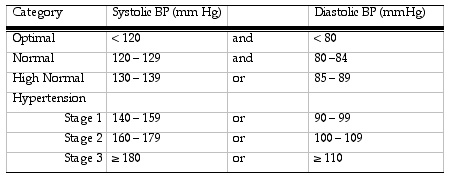Your blood pressure tells a lot about your general health. High blood pressure or hypertension can lead to several heart related issues and other medical conditions. One in every three US adults have hypertension, and only about half of these people take steps to keep their blood pressure under check. Uncontrolled high blood pressure can lead to stroke. It usually has no symptoms and is, therefore, considered the "silent killer".
What Resting Blood Pressure Means
Your blood hits the walls of the arteries with some force, which is called blood pressure. Similarly, the heart pushes the blood out when it squeezes itself, and this creates a pressure against the walls of the blood vessels. Your resting blood pressure is the reading taken when you cease from effort for a time.

Systolic Blood Pressure
When your heart contracts and pushes blood through your arteries while maintaining some pressure. This pressure on the arteries is systolic blood pressure – it is the upper number in your blood pressure reading. Your systolic blood pressure is considered normal if it is 120 or below. If your systolic blood pressure is 120-139, it means your blood pressure is normal but is higher than ideal. It is not that high but it still puts you at a greater risk of developing heart disease. You have high blood pressure if your systolic pressure is consistently higher than 140.
Diastolic Blood Pressure
The bottom number in your blood pressure reading is diastolic blood pressure that indicates the pressure within the arteries when your heart rests between beats. It needs to be 80 or less to be considered normal, but it is normal but higher than idea when it is between 80 and 89. You have hypertension if your diastolic blood pressure consistently stays at 90 or higher.
Exercise and Resting Blood Pressure
Many people think you should exercise hard to keep your blood pressure in control. However, there is no clear research about the relationship of resistance exercise and those who have high blood pressure. Kelly and Kelly (2000) conducted a research employing a powerful quantitative technique known as meta-analysis. The research was conducted to testify what is known about the use of resistance training as a non-pharmacological intervention in bring your blood pressure down to normal.
The results of this research confirmed that resistance exercise helped participants in lower systolic and diastolic blood pressure by 2% and 4% respectively. The length of training was between 6 and 30 weeks – the mean training periods was of 14 weeks. Frequency was between 2 and 5 times a week with an average of three times a week. The range of intensity was from 30% to 90%1-RM. The total length of per session varied from 20 to 60 minutes with an average of 38 minutes. The number of sets was between 1 and 4, whereas the number of exercises was between 6 and 14.
The result of meta-analysis shows that though there is a change in resting blood pressure through progressive resistance exercise, the change is not huge. The good thing is that even a small reduction in your blood pressure offers great benefits and goes a long way in reducing your risk for developing heart disease. Another important finding of this research was that both circuit training protocols and traditional %-RM designs created same changes in blood pressure. The researchers also suggest that people with high blood pressure should take serious care when going for high intensity exercise.
How Blood Pressure Responses to Aerobic Exercise

The research also considered resting blood pressure during upright exercise. In this case, the normal blood pressure response is to increase systolic blood pressure a bit with a little or no change whatsoever in diastolic blood pressure. The decrease in diastolic blood pressure is mainly due to the vasodilation of the arteries – the artery size increases that lowers blood pressure during the diastolic phase. If that does not happen, it means you have a condition called hypotension, which is not normal.
Similarly, if your diastolic blood pressure increases more than 10mmHG during or even after exercise, it usually means you have unstable hypertension. This may be because you have underlying heart conditions or coronary artery disease. Your systolic blood pressure will come down slowly after exercise. This is an active recovery phase. Your systolic blood pressure may drop suddenly during a passive recovery phase, which may accompany with a drop in diastolic blood pressure. If you are taking certain medications, your resting blood pressure will be different because you will have variable responses to exercise.
Monitoring Your Blood Pressure
In order to know your resting blood pressure, you need to learn how to check and monitor it regularly. You can use an electronic blood pressure monitor that consists of an inflatable cuff. You have to wrap this to your upper arm while an electronic monitor attached to the cuff will give a digital readout of the pulse and blood pressure.
Your systolic blood pressure number is the upper reading and is always said first. If you have 120/80, it will be said that your systolic blood pressure is 120 and diastolic blood pressure is 80. Together, it reads as "120 over 80". Your blood pressure is measured in millimeters of mercury (mmHg).
How Often Should Blood Pressure Be Checked?
If your blood pressure is normal, you should go for a check-up at least once every five years. Your blood pressure is likely to increase if you are in your old age. For blood pressure that is borderline high, systolic blood pressure between 120 and 139 or diastolic blood pressure between 80 and 89, you should check your blood pressure once every year, or as per your doctor's advice. If your blood pressure is 140/90, you need to talk to your doctor and work as per their instructions.
